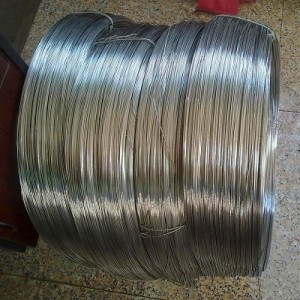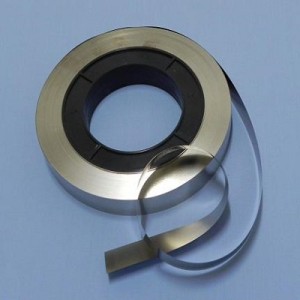Inconel 601
Key Features:
- Inconel 601 offers excellent Oxidation, Scaling & Aqueous corrosion resistance
- High temperature strength and ductility
- Spalling, Carburization and heat Resistance
- Ideal for aerospace, aviation and land based gas turbines
About Inconel 601
Inconel 601 Industrial Nomenclatures: Nickel-Chromium Alloy; Werkstoff Nr. 2.4851, UNS N06601, Pyromet 601, NiCrofer 601
Inconel 601 is fit for use in the applications demanding greatest elevated temperature heat and corrosion resistance up to 1100oC. Due to presence of nickel, the alloy is highly resistant to oxidation up to 2200oF or 1250oC. It produces extremely reliable oxide layer to prevent spalling under vigorous thermal cycling. High metallurgical stability and fine creep rupturing strength. It avoids SIGMA development and is fit for use in the thermal cycling and shocking operations.
Super alloy 601 has good mechanical properties at high temperatures. Good strength is achieved by cold solution or precipitation strengthening on the base of alloy. The alloy retain fine ductility even after prolong service. It is easily formable, machinable and weldable.
Inconel 601 Specifications:
| Wire | Sheet | Strip | Pipe | Rod |
| ASTM B 166/ASME SB 166,DIN 17752, DIN 17753, DIN 17754, EN10095, ISO 9723,ISO 9724, ISO 9725, AWS A 5.14 ERNiCrFe-11 | ASTM B 168/ ASME SB 168 DIN 17750 EN10095, ISO 6208 | ASTM B 168/ ASME SB 168,DIN 17750 EN10095,ISO 6208 | ASTM B 167/ASME SB 167, ASTM B 751/ASME SB 751, ASTM B 775/ASME SB 775ASTM B 829/ASME SB 829, DIN 17751,ISO 6207 | ASTM B 166/ASME SB 166,DIN 17752,DIN 17753,DIN 17754,EN10095ISO 9723,ISO 9724,ISO 9725 |
Inconel 601 Applications
Industrial furnace components-retorts, heat exchangers, petrochemical, heat processing industry, aerospace and land base gas turbines, rocket engine nozzles, chemical processing, Nitric acid production, radiant tubes, boilers, turbocharger rotors, proven material for pressure vessels following ASME section 8, exhaust systems , nuclear steam producing reactors and pollution control.
A superior oxidation resistant alloy 601 is used in the combustion equipments such as in the solid waste incineration and superheater tube supports in the power production units.
In addition of becoming an essential material in the aero gas turbines, Inconel 601 has found a significant role in applications demanding high temperature strength and control on oxidation. As it has higher strength as compared to standard grades, it is fit for heavier refractory above 1150oC.
Inconel 601 Corrosion resistance
Alloy 601 is firmly resistant to oxidation at the elevated temperature. It also prevents spalling up to 1260oC. The secured oxide layer prevents spalling in the intense media and evades carburization as well as nitridation. This alloy is also mildly resistant to sulfur and vanadium oxides.
Machining
Alloy 601 can be machined using the traditional machining methods. It has greater strength than standard steel grades and work hardens while machining therefore use of heavy duty machining tools is recommended. Standard coolants are fit for use. Water based coolants can be used for high speed procedures including turning and milling. Carbide equipments are used for turning with a regular cut. High speed steel tooling must be employed for interrupted cuts for smooth finishing to tight tolerance. Use tools that have a positive rake angle. Constant feed rates must be used to prevent work hardening due to dwelling of the drill on the metal. Firm systems are important for example stub drill is suitable. Heavy duty and large speed steel drills with a heavy web are preferred.
Forming
Alloy 601 is easily formed by standard methods. It is stronger than regular steel. Heavy duty lubricants are used while cold forming. It is important to completely clean all the traces of lubricant after forming of component as embrittlement may take place at the elevated temperatures if lubricant is left.
Welding
Alloy 601 can be easily welded using the traditional welding techniques. Clean the weldable surfaces to remove any oil, paint or crayon stains. The recommended joining methods for this alloy are Gas tungsten arc welding, shielded metal arc welding, gas metal arc welding. Electrodes are stored in a dry place to avoid any interaction with moisture. Complete removal of slag is essential before subsequent weld passes and after final welding.
Forms Produced
| Inconel Alloy 601 Wire | Inconel Alloy 601 Wire Mesh |
| Inconel Alloy 601 Strip | Inconel Alloy 601 Sheet |
| Inconel Alloy 601 Rod | Inconel Alloy 601 Pipe |
| Inconel Alloy 601 Flanges | Inconel alloy 601 Foil |
Heanjia Super-Metals, America offers all above forms of Inconel Alloy 601 in all standard as well as custom specifications.




